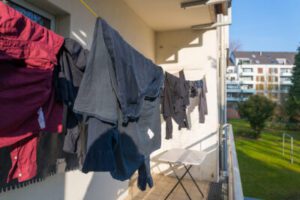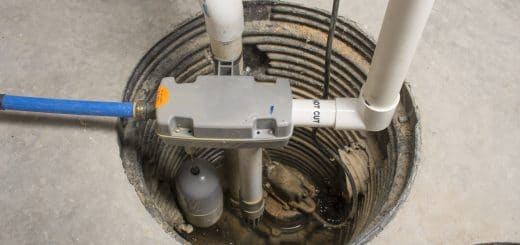6 Areas to Focus On When Disinfecting Your Home
Most people assume the bathroom is the dirtiest place in their home. Folks will be surprised to learn that it is the kitchen that holds the greatest number of germs. Focus cleaning and disinfection not only in the kitchen and bathroom, but in several specific areas of the home.
Homeowners should be aware of the difference between disinfecting and cleaning. Cleaning will not kill microscopic germs, but disinfecting will. Consider that cleaning a dirty window may not be a priority, but disinfecting a doorknob someone sneezed upon should be done promptly.
Thorough disinfecting prevents harmful microorganisms, like bacteria, fungiFungi are a group of organisms, including mold, mildew, and ... More and virusesViruses are microscopic infectious agents that can only repr... More, from causing damage to human health. Homeowners should follow the directions on the disinfectantA disinfectant is a chemical substance used to kill or inact... More products. The fine print indicates if the product simply sanitizes or kills bacteria, fungiFungi are a group of organisms, including mold, mildew, and ... More and virusesViruses are microscopic infectious agents that can only repr... More.
High-touch surfaces should be disinfected with a bleach solutionA solution is a homogeneous mixture of two or more substance... More diluted with water or rubbing alcohol that contains 70 percent alcohol. Be careful to avoid mixing the bleach with other products; doing so can unleash toxic fumes. Make sure the bleach has not expired.
1. Kitchen
As mentioned, the kitchen is a breeding ground for bacteria. Salmonella and E. coli teem in the kitchen environment. Cutting boards, sponges, counter tops and kitchen sinks are places where coliform bacteria (a family of bacteria that includes salmonella and E. coli) thrive.
Warm and moist areas nourish bacteria. Sponges, therefore, harbor more than 75 percent of the coliform bacteria. Kitchen sinks carry 45 percent of the bacteria; 32 percent is found on counter tops; and, 18 percent of the bacteria grow on cutting boards.
Due the constant dampness inside the kitchen sink, bacteria tend to flourish there. Especially when uncooked meat products are handled in the sink, copious amounts of bacteria are introduced. Use disinfecting cleansers to scrub the stainless steel kitchen sinks daily.
After using wooden cutting boards, sanitize them with a bleach solutionA solution is a homogeneous mixture of two or more substance... More. Run plastic cutting boards and sponges through the dishwasher for a thorough sanitization. Wipe countertops, faucet handles and refrigerator surfaces with disinfectantA disinfectant is a chemical substance used to kill or inact... More wipes. Change the dishtowels several times throughout the week.
2. Bathroom
The moisture from warm, daily showers tends to sustain bacterial growth. Disinfect the bathroom at least once a week. Pay attention to the shower tub and drains, faucets and the floor around the toilet. Wash the bathroom towels in hot water weekly to kill bacteria carried by human bodies.
Toothbrushes tend to accumulate some of the germs that are scattered into the air every time the toilet is flushed. Protect toothbrushes from the spray of bacteria by storing them in the medicine cabinet. Toothbrushes may be cleaned in the dishwasher but should be replaced every three months.
3. Living Room
Family members and guests alike can introduce bacteria to shared computers, remote controls and phones. MoldMold is a type of fungus that grows in damp or humid conditi... More and staph are commonly found on remote controls and video game controllers. Living room carpets also carry dirt and grime, sometimes more than city streets.
Disinfect the frequently handled objects in the living room with wipes. Human hands carry germs, so pay close attention to light switches, doorknobs and end tables. Do not forget to treat soft surfaces, like cushions and upholstered furniture with disinfectantA disinfectant is a chemical substance used to kill or inact... More sprays, as well.
Electronics, like tablets and smartphones, should be wiped down with alcohol wipes that contain 70 percent isopropyl alcohol. Delicate electronics remain protected from water damage when cleaned with specialized electronics sanitizersSanitizers are chemical agents used to reduce bacteria and m... More, which use UV-C light to kill bacteria within seconds.
4. Bedroom
Mattresses, large pillows and most bedding cannot simply be thrown into the washing machine. Especially if someone is ill, these bedroom essentials should undergo thorough disinfecting. A phenolic disinfecting spray contains bacteria-killing ingredients yet is safe to use on fabrics.
Contact time is important when disinfecting soft surfaces. Disinfecting sprays should be misted onto the bedroom surfaces and be allowed to remain wet for up to 10 minutes. The spray’s active ingredients will then have a chance to work. DryingDrying is the process of removing moisture from materials, s... More times are specific to each brand of disinfectantA disinfectant is a chemical substance used to kill or inact... More.
5. Laundry
Clothing and similar washable items used by a person who is ill can be safely washed with other people’s garments. While handling dirty laundry (especially clothing worn by a sick person), wear disposable gloves. Also, do not shake dirty laundry, which can release germs into the environment.
Use regular laundry detergent and wash at the warmest settings recommended on the garment instructions to disinfect the items. Dry the clothing at the hottest settings. Take care to also disinfect the laundry hamper used to store the soiled clothing.
6. Personal Items
Purses, gym bags and shoes introduce germs into the home from the outside. Disinfecting wipes are useful to quickly kill the germ infestations on personal items. Credit cards should be wiped down with an EPA-approved cleaner. PorousPorous describes a material that contains small openings or ... More surfaces, like paper currency, are less likely to carry virusesViruses are microscopic infectious agents that can only repr... More.
Frequent handwashing with soap and water for at least 20 seconds is imperative to help keep the home environment clean. Property owners can also ensure their building is regularly and completely disinfected by hiring disinfection cleaning services by professionals for full-service cleanings.
Residential Cleaning and Disinfection
A clean and comfortable space is important to the health of its inhabitants. Cleaning and restoration professionals will create a workable cleaning plan that will accommodate your busy schedule. Their services are designed to be flexible. A cleaning crew can be dispatched to your property within short notice.
An integral part of cleaning services is mold removal. MoldMold is a type of fungus that grows in damp or humid conditi... More infestations can be present when the property is damp and provides organic food sources, like dirt and grime. Skilled technicians remove moldMold is a type of fungus that grows in damp or humid conditi... More and clean the surfaces, thereby eliminating the adverse health effects caused by the sporesSpores are microscopic reproductive units of fungi or mold t... More.












